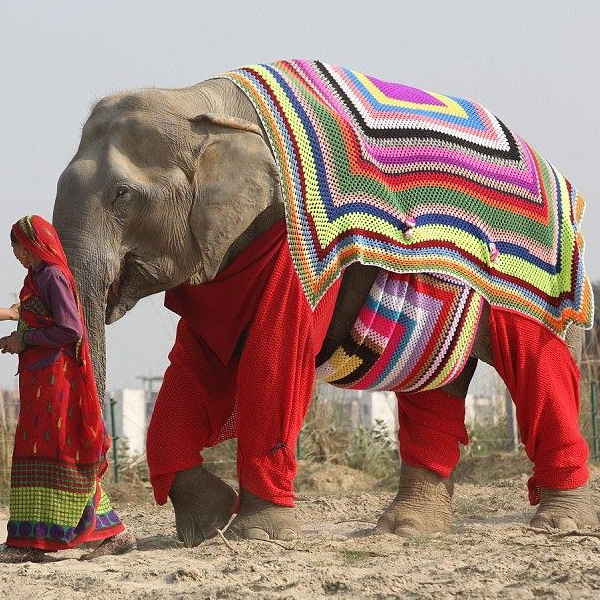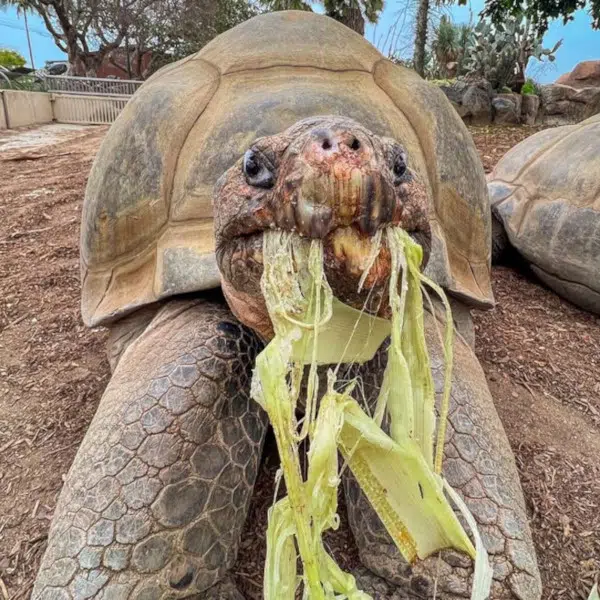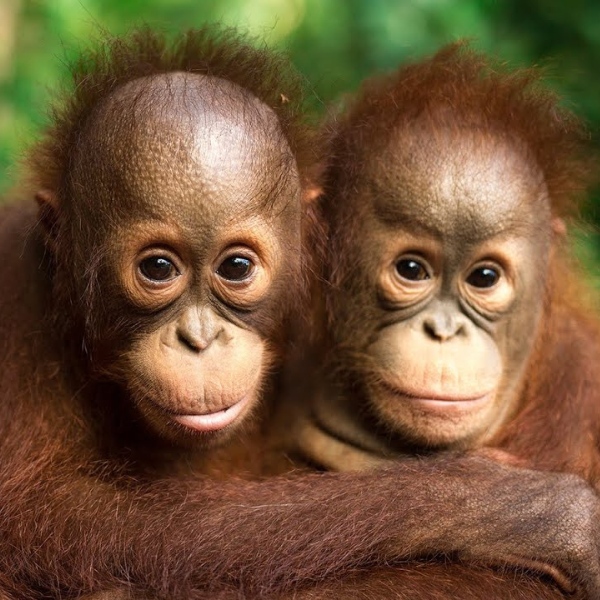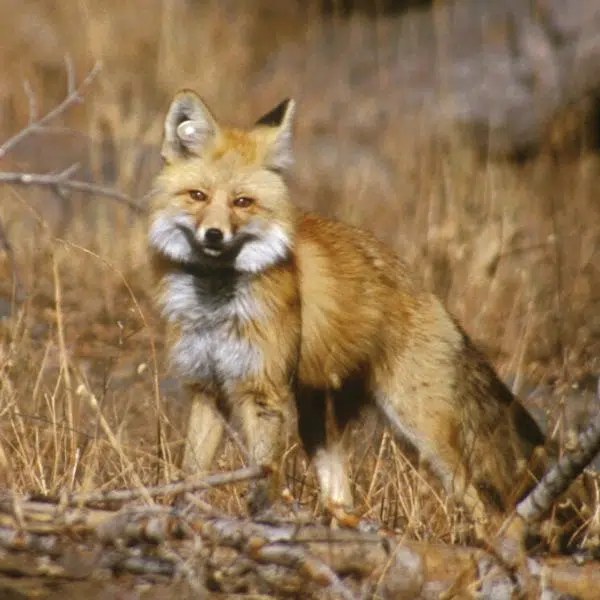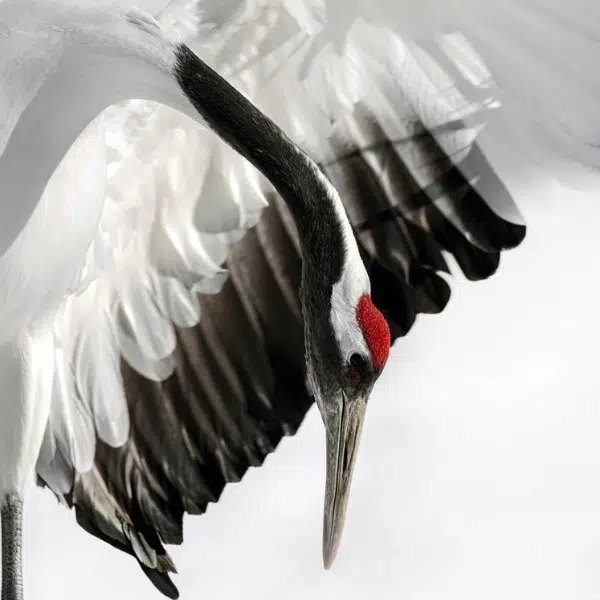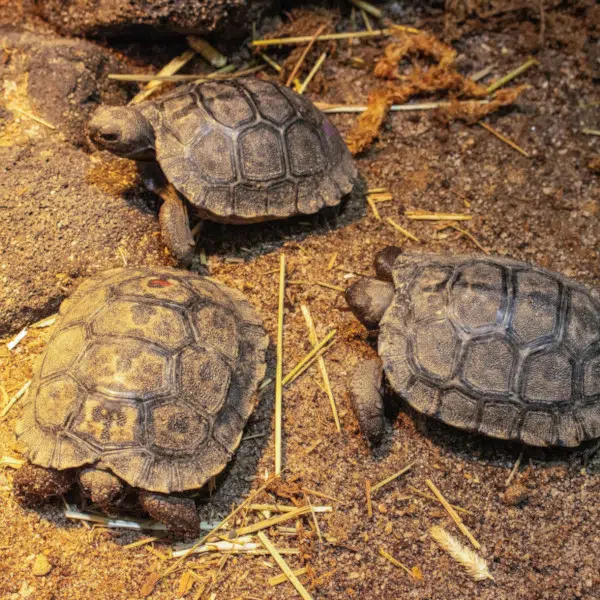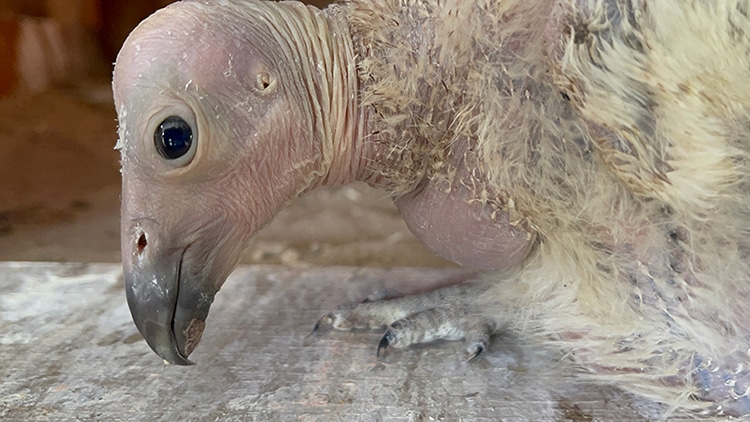
A condor chick at the LA Zoo. (Photo: LA Zoo)
In 2022, the magnificent California condor flapped its mighty wings once more over the redwood forests of California. The enormous bird had been absent from the region for a century, and its return was due to a careful breeding and releasing strategy that has fought the tide of extinction. Now, in a record year for the condor, the LA Zoo's program welcomed a whopping 17 chicks to boost the population.
These massive creatures, with a wingspan up to 10 feet and distinctive white patches on the undersides of their feathery extremities, can live up to 60 years. They feed on carrion and roost in nests. The birds, which are scientifically known as Gymnogyps californianus, once dominated the skies of the western states but their numbers plummeted across the 19th and 20th centuries due to hunting, habitat destruction, pesticides, and lead poisoning.
In 1982, only 22 California condors existed. But impressive conservation efforts over the last five decades have raised this number to 561 birds.
Usually in the wild they have one chick at a time, raising it exclusively. However, zookeepers and researchers at the LA Zoo tried a new tactic over the past few years to help encourage population growth.
They first attempted in 2017 to allow adoptive condor parents to raise two eggs. Then, in 2023, they tried three. Both amounts did not seem to phase the condors. This year, six chicks were raised in trios, eight in pairs, and three as only children.
These 17 baby birds will learn how to be condors from their parents, likely spending at least a year and a half among their fellows at the zoo. They will then be released into the wild, if researchers deem them capable of surviving and thriving.
Currently, of the 561 California condors living, 344 are in the wild. While an infinitesimally small fraction of populations passed away, the surviving number is still a remarkable success by the federally established California Condor Recovery Program (CCRP). The CCRP works with zoos, tribal nations, and non-profits to ensure a safe, stable future for the species. While avian flu presents the most recent urgent threat, the new babies will be vaccinated to give them the best chance of success once they spread their soon-to-be massive wings in the wild.
The critically endangered California condor species is slowly reviving, with 17 chicks born in the LA Zoo this past year, a record.
View this post on Instagram
h/t: [Smithsonian Magazine]
Related Articles:
Watch the Nerve-Wracking Moment a Whale Capsizes a Boat off the Coast of New Hampshire
Clever Dog Learns to “Pay” for Cookies With a Leaf After Watching Students Use Money
Stealthy Cat’s GPS Tracker Shows It “Secretly” Trails Dog and Owner
Largest Eagles in the World Are So Big That Their Talons Are Bigger Than Bear Claws












































































